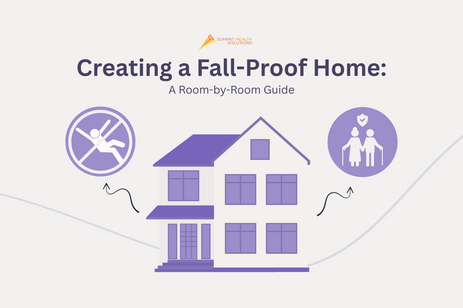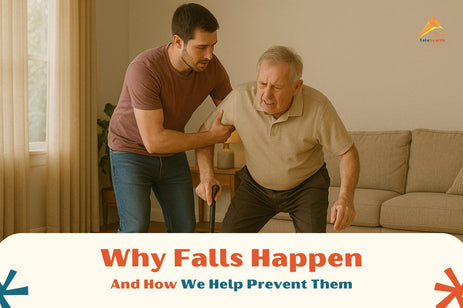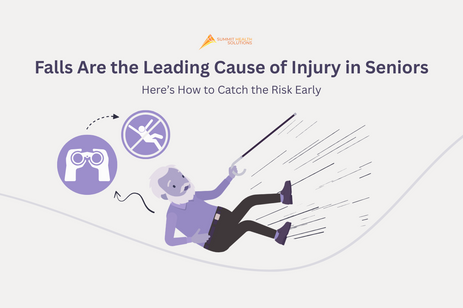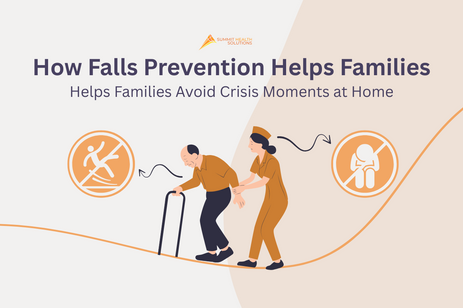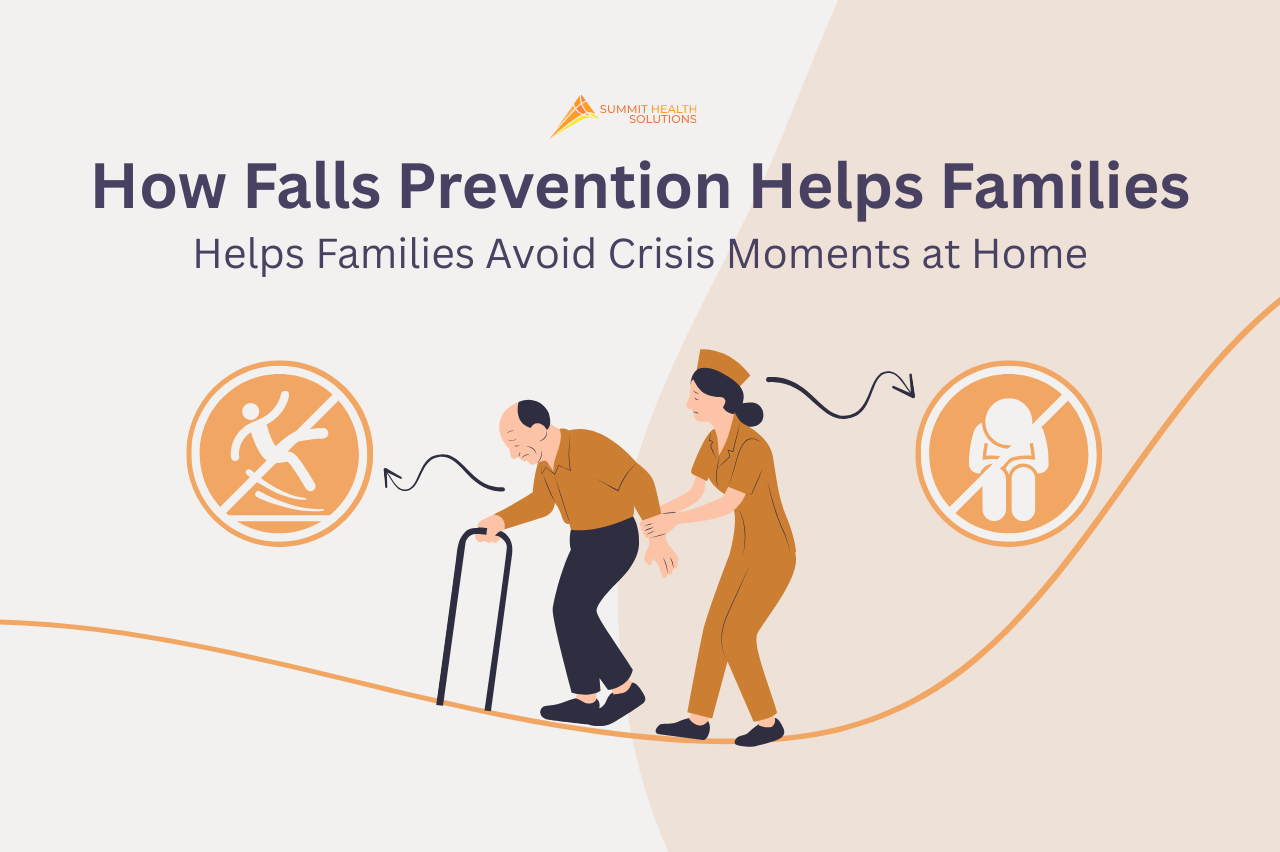
Introduction: The Hidden Danger Lurking at Home
A single fall can change everything for a family. For older adults, a fall at home is not just a bruise or sprain — it can trigger hospital visits, long recovery times, and life-altering consequences. Yet, many families overlook falls prevention until a crisis occurs.
Falls prevention at home is not about living in fear — it’s about empowering families to protect loved ones and avoid preventable emergencies.
Why Falls Happen at Home
Statistics show that one in three people over 65 will fall each year — and most falls happen in their own home. Common causes include:
-
Cluttered walkways and poor lighting
-
Slippery bathrooms
-
Rugs or uneven flooring
-
Muscle weakness and balance issues
-
Medications causing dizziness
The good news? Many of these risk factors are preventable with the right planning and proactive checks.
Related Resource: CDC’s Older Adult Fall Prevention Guide
The True Cost of a Fall: Financial and Emotional Stress
When an older family member falls, the ripple effect impacts everyone. Falls can lead to:
-
Fractures or head injuries
-
Emergency hospital stays
-
Unexpected care costs
-
Loss of independence
-
Stress and burnout for family caregivers
By investing time and effort in falls prevention, families can avoid the heartbreak and chaos that comes when a loved one suddenly needs urgent medical care or long-term assistance.
Simple Steps to Prevent Falls at Home
Falls prevention doesn’t have to be overwhelming. Start with these steps:
-
Declutter: Keep floors clear of cables, shoes, and loose rugs.
-
Improve Lighting: Install night lights in hallways and bathrooms.
-
Bathroom Safety: Use grab bars and non-slip mats.
-
Stay Active: Encourage gentle exercises to build strength and balance.
-
Check Medications: Talk to a GP or pharmacist about side effects.
Tip: Regular home checks make a big difference. Download this Falls Risk Assessment Checklist to identify hazards before they cause harm.
How Families Can Work Together
Falls prevention works best when the whole family gets involved. Here’s how:
-
Communicate: Talk openly about risks and safety needs.
-
Check In Regularly: Look for new hazards as seasons change.
-
Get Professional Support: Consider a home safety assessment by an occupational therapist.
-
Use Community Resources: Local councils and health services often offer free advice or equipment.
Helpful Resource: National Council on Aging - Falls Prevention
Take Action Before a Crisis Strikes
Preventing falls is one of the best ways to keep older loved ones safe, healthy, and independent. Families who plan ahead and make small changes today are far less likely to face painful crisis moments tomorrow.
Don’t wait until it’s too late — take 10 minutes to do a home check today!
Download your free Falls Risk Assessment Checklist and protect your family’s peace of mind.
Conclusion
Falls prevention is about more than safety — it’s about protecting quality of life and avoiding the stress of a sudden crisis. By staying proactive and informed, families can create a home where older adults thrive confidently and securely.
FAQs About Falls Prevention at Home
1. Why is falls prevention so important for older adults?
Falls are one of the leading causes of injury and hospitalisation for people over 65. Preventing falls helps older adults maintain independence, avoid costly medical bills, and stay safer in their own homes.
2. What are the biggest risk factors for falls at home?
Common risks include cluttered floors, slippery surfaces, poor lighting, loose rugs, uneven steps, muscle weakness, and certain medications that cause dizziness. Identifying and fixing these hazards early is key.
3. How can I check if my loved one’s home is safe?
Use a simple home safety inspection and a Falls Risk Assessment Checklist to find and fix hazards. Many community organisations also offer home visits to help families make safety improvements.
4. What exercises help prevent falls?
Gentle balance and strength exercises like walking, or guided physiotherapy can help older adults build confidence, strengthen muscles, and stay steady on their feet. Always check with a doctor before starting new exercises.
5. When should I talk to a professional about falls prevention?
If your loved one has fallen before, seems unsteady, or has trouble moving around the house, it’s wise to consult a GP, physiotherapist, or occupational therapist for advice and tailored support.
6. Where can I find more help and resources?
Check trusted organisations like the National Council on Aging and the CDC’s Older Adult Fall Prevention pages for more guides, safety tips, and community programs.
Have more questions?
Download our free Falls Risk Assessment Checklist and take the first step toward a safer, more secure home.

